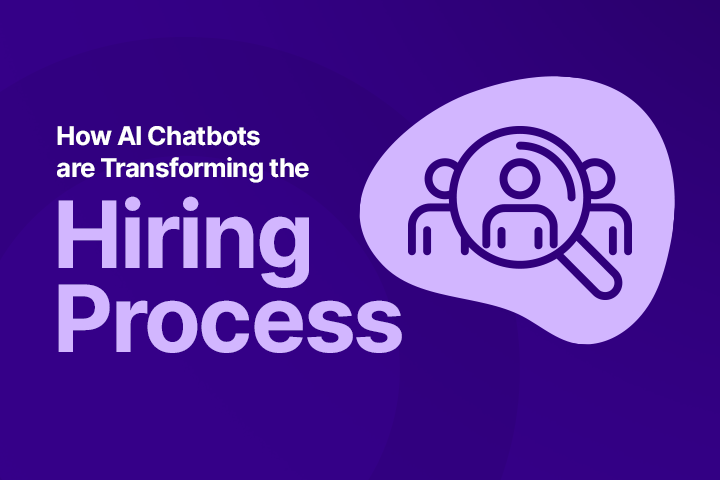Table of Contents
Recruitment is not only a time-sensitive business process but it can also be a significant financial burden. As a hiring manager or recruiter, finding cost-effective strategies to reduce recruitment expenses is essential for your organization's bottom line. In this blog, we will explore practical tips and techniques that are most relevant to hiring managers and recruiters, helping you streamline your recruitment process while keeping costs in check.
Ways to Reduce Cost Per Hire in 2024
1. Focus on quality over quantity
When onboarding new direct hires, it is important to focus on finding a few qualified candidates rather than screening through a large pool of unqualified candidates. It is more cost-effective and time-efficient to hire the right person the first time around.
Here are a few tips on how you can focus on quality over quantity:
Write clear and concise job descriptions:
The job description should clearly outline the essential duties and responsibilities of the position, as well as the required skills and experience. This will help to attract qualified candidates and deter unqualified candidates from applying.
{{s2-link="/sandbox/home-v3"}}
Use targeted job boards:
When posting job openings, hiring managers and recruiters should use targeted job boards that are specific to their industry or field. This will help to increase the visibility of the job openings to qualified candidates.
Conduct thorough pre-employment screenings:
Pre-employment screenings can help to identify unqualified candidates early on in the hiring process. This can save time and resources by preventing hiring managers and recruiters from interviewing unqualified candidates.
4 Examples of Putting Quality Over Quantity in the Hiring Process
- Instead of posting job openings on all general job boards, post them on targeted job boards that are specific to your industry or field. This will help to attract more qualified candidates.
- Instead of reviewing all resumes that come in, use a screening process to identify the most qualified candidates. This could involve reviewing resumes for keywords, looking for relevant experience, or using a pre-employment assessment.
- Instead of interviewing all candidates, only interview the most qualified candidates. This could involve conducting phone interviews or video interviews to narrow down the pool of candidates.
- Instead of making a hiring decision quickly, take the time to assess the candidates' skills and experience, and to check their references. This will help you to make the best possible hiring decision.
By focusing on quality over quantity in the hiring process, hiring managers and recruiters can save time and resources, and hire more qualified candidates. This can lead to improved employee performance, productivity, and retention.
2. Utilize Digital Marketing and Social Media
- Harness the power of social media platforms to promote job openings and engage with potential candidates.
- Run targeted online advertising campaigns to reach a wider audience and attract qualified talent.
- Leverage SEO techniques to optimize job listings and improve their visibility on search engines, reducing the need for paid job ads.
3. Create a Robust Employer Brand
A study by LinkedIn found that companies with a strong employer brand had a 43% lower cost-per-hire than companies with a weak employer brand. Develop a strong employer brand to attract top talent organically and reduce the reliance on expensive recruitment agencies. Showcase your company culture, values, and opportunities through content marketing, employee testimonials, and online presence.
4. Implement an Applicant Tracking System (ATS)
Invest in an efficient ATS to streamline the recruitment process, saving time and resources. Automate administrative tasks, such as resume screening and candidate communications, to reduce manual workload.
5. Embrace Employee Referral Programs
A study by CareerBuilder found that companies that use employee referrals had a 25% lower cost-per-hire than companies that do not use employee referrals. Encourage employees to refer candidates, creating a cost-effective talent pipeline. Offer incentives and rewards for successful referrals to motivate your workforce.
6. Optimize Job Descriptions
Craft clear and concise job descriptions to attract candidates who genuinely match your requirements. Use inclusive language and highlight company benefits to appeal to a broader talent pool.
7. Conduct Virtual Interviews
A study by Glassdoor found that companies that use video interviews had a 20% lower cost-per-hire than companies that do not use video interviews. Save on travel and accommodation costs by conducting interviews virtually. Invest in video interview platforms to maintain a personal connection with candidates while reducing expenses.
{{hi-link="/sandbox/home-v3"}}
8. Develop a Talent Pipeline
Continuously build and maintain a talent pool of potential candidates for future openings. Reduce time-to-hire and costs associated with external recruitment agencies by having a readily available talent pipeline.
Also read: What is rightsizing?
9. Monitor and Analyze Recruitment Metrics
Keep track of key recruitment metrics such as cost-per-hire, time-to-fill, and source effectiveness. Use data-driven insights to make informed decisions and optimize your recruitment strategy.
Conclusion
Hiring managers and recruiters play a pivotal role in reducing recruitment costs while maintaining the quality of talent acquisition. By implementing these relevant and cost-effective tips, you can improve your recruitment process and ensure that your organization's resources are well-spent. Cost reduction and efficient hiring practices go hand in hand, helping your company achieve its recruitment goals without breaking the bank.






